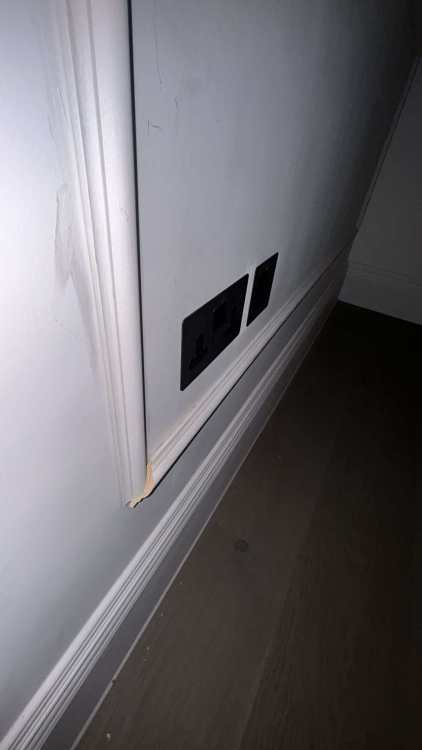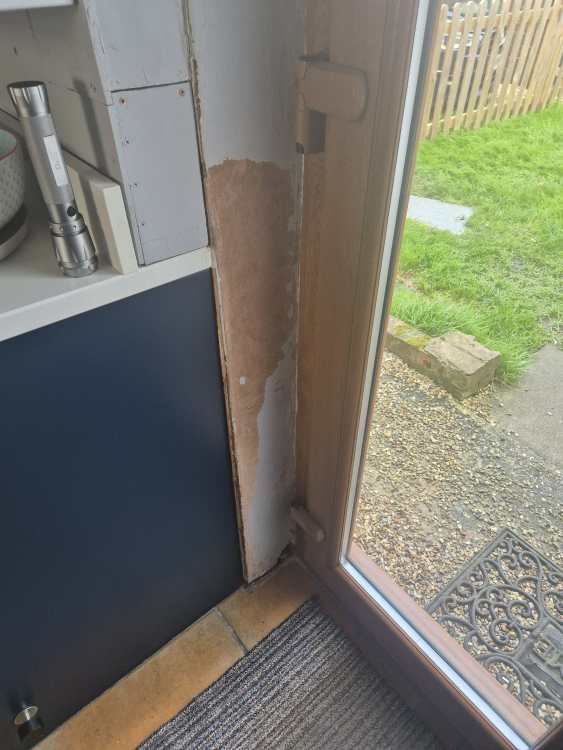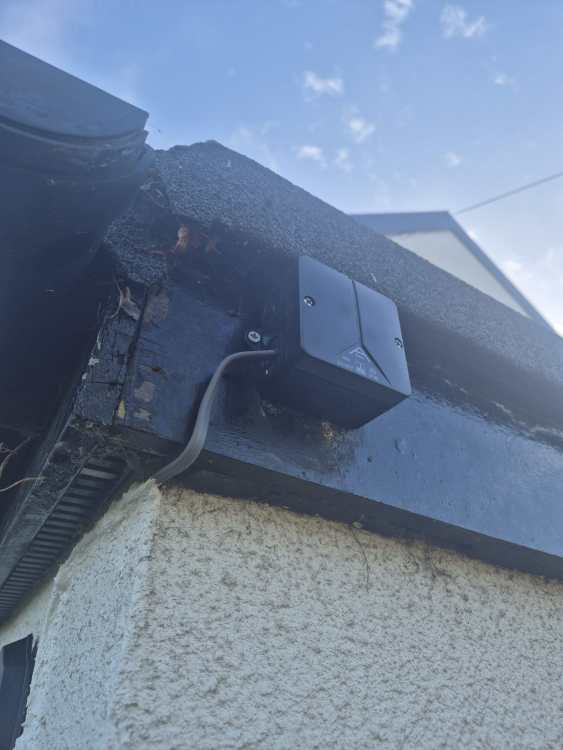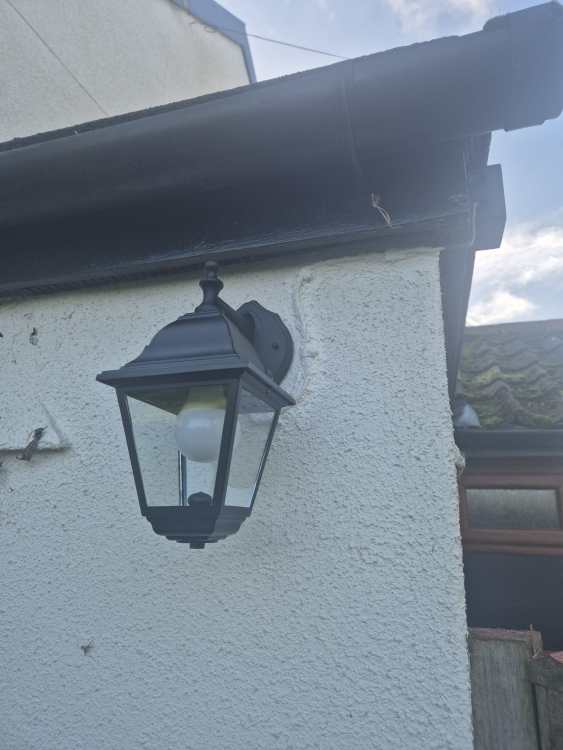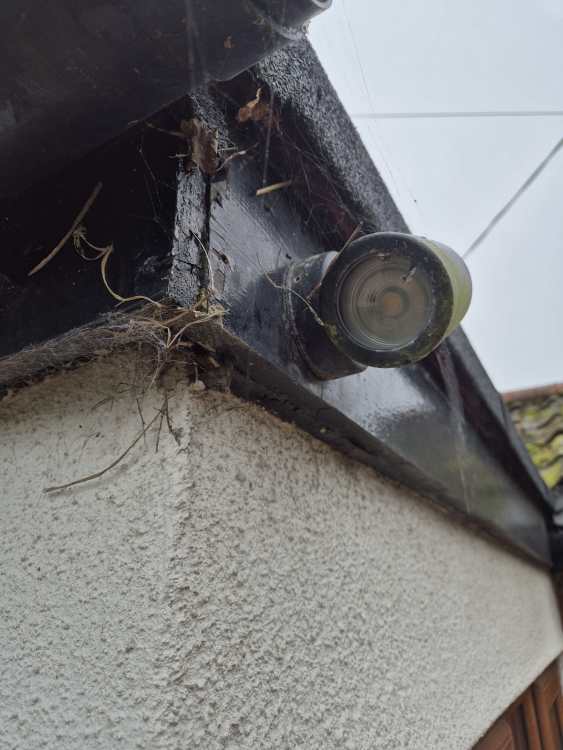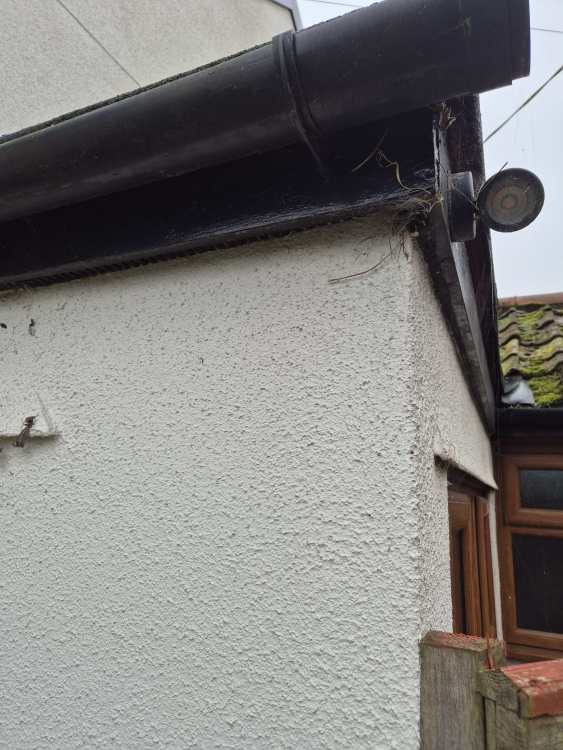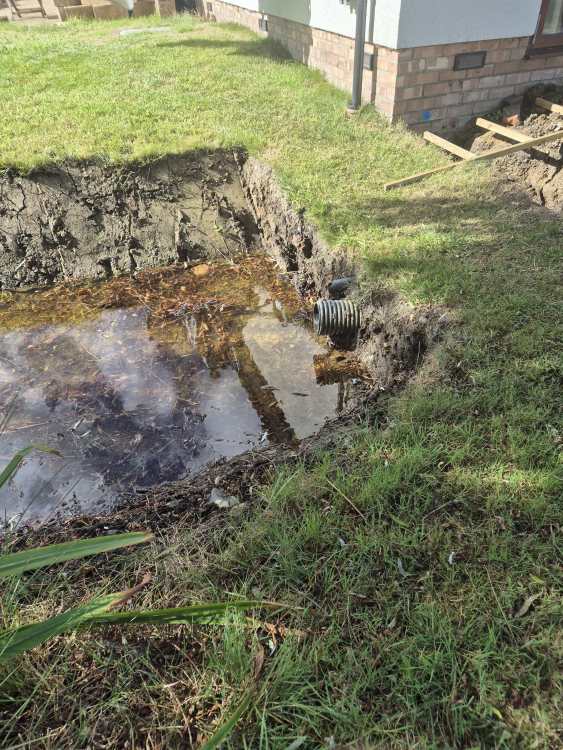-
Posts
23 -
Joined
-
Last visited
About DIYHacker
- Birthday 10/04/1975
Personal Information
-
About Me
DIY lover, mountain biker, father, outdoor lover, ex South African
-
Location
Suffolk
Recent Profile Visitors
The recent visitors block is disabled and is not being shown to other users.
DIYHacker's Achievements

Member (3/5)
4
Reputation
-
@crispy_wafer thanks for the advise! Will give that a go!
-
Unfortunately not.. Its a large living room.. opposite end (about 6m away) is bifold doors
-
Hi all Need a bit of advice.. I was installing panelling trim at a friends house over the weekend and when putting one piece on, we found that there was a bulge in the wall right towards the end of the trim piece by the plug in the picture and as such, the end of the trim won't attach to the wall. What I am concerned about is if I push it back in place and then put a small pin/nail in, this might pull the rest of the trim off the wall again or worse, split the wood because its so small and thin 😐 Should I use a nail gun or will it be better to just use a hammer and small nails/pins? And what size nails/pins? 🫤
-
Thanks for the reply @MikeGrahamT21 .. Not sure regarding triple glazing over double glazing, but we had the rest of the house done with double 4 years ago now with no issues so far but probably too soon for anything to happen with those.. Good point on waiting for more to save on delivery, i think we have 2 to get done now so will get a quote and go from there.
-
We moved in to our house 5 years ago and soon after started experiencing some of the triple glazed panels started to show condensation in them. After doing some digging in the paperwork that the previous owners left us, we found that these windows were sold and installed by SEHBAC. After then having to pay to transfer the remaining warranty to us, they started replacing the panels as more continued to fail. Over the course of the last 4 years we have had to replace 5 or 6 (I can't remember anymore as each time was a nightmare with one pane taking 8 months to be replaced!!) The remainder of the warranty has now run out and due to the extremely piss poor service we received from that company, we won't be going back to them. I have looked online and found that you can buy these panels direct from other companies but I am worried that the quality won't be great. Can anyone recommend a reputable company to use to buy these replacements and I can fit them myself when they arrive?
-
No, since installing a PIV unit 2 years back, we have no issue with condensation anymore @Mr Punter Yea, I think that is the best route forward 👍
-
Yes, the flue is on that wall but goes straight out at 90 degrees.. When the boiler was replaced that was replaced at the same time.. And no, its not damp just when it rains.. When we use the moisture meter further in the wall, it is dry. Its literally high readings within the 10cm square on wall you can see as well as behind that grey box.
-
Hi.. So back again with another topic.. We have a leak within a solid brick wall (1900's house). Initially we thought this might be due to blown render on the outside but have since had the outside of the house sorted out and still we have this issue.. There is an outdoor tap in the very near vicinity but I got the plumber in to replace the old tap at and the same time he replaced the pipe that goes through the wall.. Problem still there.. After each possible fix, we have used the dehumidifier to draw out all the moisture in the wall and over the next day or so it comes back again.. With a moisture meter I have pinpointed a rough area of about waist height (just above counter top in picture) where it starts and then over time it moves down the wall so have ruled out rising damp.. The boiler is in the cupboard right there but we have also had that recently replaced and the plumber said non of the pipes are running through the wall.. Speaking to a few companies that do leak detection, their costs are in the region of £600 -£1000 to detect the leak and then depending on who you speak to, the remedial works (at an additional cost) are very vague which is starting to become annoying.. My thought is, I know where the leak is within a 10cm square, do I really need these guys to pin point the same area with most of them being non committal on actually opening the wall up, repairing the leak and then closing back up again or do I just book a slot with my plumber to be onsite and I open the wall up myself and make good once he has fixed it or is there something else I need to think about?!
-

Best practice to extend short cable to external light
DIYHacker replied to DIYHacker's topic in Electrics - Other
Thanks all for the advice! Managed to get it sorted over the weekend and got it all decorated. Only bit left is to paint the bit of cable black when I sand down the board and repaint it.. Think it all turned out pretty good. -
Hi all I need to move & replace the existing external light we have. As you can see its mounted to the board with the wire cut short. This light provides pretty useless coverage outdoors so I am going to replace it but would like to mount it on the other corner wall (as visible in 2nd picture) so I need to extend the wires to reach (maybe 20cm). As they will be exposed to the elements, what is the best / safest way to do this?! I will then mount the wire on the board, paint it etc so you don't notice it.. running new cabling is not really an option here.
-
Has anyone had any experience with these mortar free bricks for a retaining wall? As mentioned in my raised patio post, we have this seasonal pond that fills up in the rainy season but as the seasons are going all crazy, we have had far too much rain for this size of pond and as such it over flows. As you can see from the picture, its close to the corner of the house and last year, the water was lapping against the bricks.. So what I want to do is build a retaining wall that is higher than the pond to keep it away from the house and was thinking of using these mortar free bricks to create the wall. As the wall will be higher than the ground level behind it, I am looking to level that space with the new raised patio but rather than having a solid fill (in case water levels get even higher), I will put in a large drain and then fill with decorative stone so that will then drain off to the garden rather than over the patio.. I have a request out to the council's flood team for advice too as the flooding in the garden seems to mainly be run off coming from ditches outside our property which they aren't maintaining..
-
There is no change of direction, its just one long pipe.. I am putting a grill over both ends so to ensure that its only water that passes through when needed so should be fine.
-
Cool, thanks for the info. If you shouldn't backfill inside with soil, should i just fill that with more MOT and compact that down?
-
@Conor Ok thanks, that's a relief on point one! With regards to the protection around the pipe, I used a few of the concrete blocks for the sides with the flag stone on top. The pour of the concrete will be level with that flag stone. Will that still be ok? Digger driver doesn't do half day unfortunately.. I will let that all dry out and hit it with the wacker plate before pouring the concrete.. The soil in the middle will be scraped off to help fill out the trenches once the concrete is down and the 2 high concrete bricks are laid.. Then as you say, will fill up with hardcore to bring it all level..
-
Ha, brilliant! We are close to Swiss Farm


